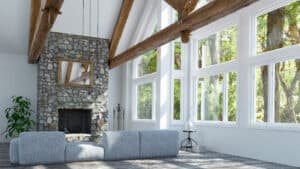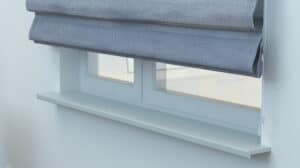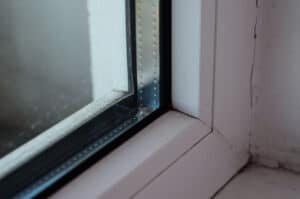 Hey Folks, Gus here… I wasn’t always the Glazing Expert I am today. Just like you, I knew nothing about windows or how they operated…. aside from the opening and closing part. So, it occurred to me that it might be helpful to explain some of the terminology surrounding window glazing. Let’s Get Swinging!
Hey Folks, Gus here… I wasn’t always the Glazing Expert I am today. Just like you, I knew nothing about windows or how they operated…. aside from the opening and closing part. So, it occurred to me that it might be helpful to explain some of the terminology surrounding window glazing. Let’s Get Swinging!
Argon Gas: Thermal Enhancement in Double Pane Windows
Argon gas is a common feature in double pane windows, as it is injected between layers to enhance insulation. Argon does not conduct heat as well as air, so it’s an excellent insulator. Argon can help lower your utility bill over time.
Awning Window: Functionality Defined
An awning window is a tilt window that opens from the bottom, operated either by push or crank. Its distinctive design offers both aesthetic appeal and practical ventilation.
Balance: Regulating Window Movements
The balance mechanism plays a crucial role in regulating the placement and force required to support single and double hung windows. These mechanisms are typically concealed within the window sash, with variations in design, strength, and weight.
Bay Window: Three-Dimensional Elegance
The bay window, with its three-sided, protruding design, adds a touch of architectural elegance to any space, creating a visual focal point.
Bow Window: Curved Aesthetics
A bow window, a curved variation of the bay window, features smaller window segments. It provides a distinctive look with a softer curvature.
Casement Window: Hinged Simplicity
Casement windows, hinged on one side like a door, are opened using cranks. Their straightforward design offers practicality and ease of use.

Casing: Interior Frame Enhancement
Casing refers to the decorative trim around the interior frame of a window, adding a finishing touch to the overall aesthetics.
Compression Jambs: Supporting Tilt Functionality
Compression jambs, located in the window jamb, facilitate the tilting of the window sash. This feature aids in maintaining a weather-tight seal between the window sash and jamb.
Cottage Style Window: Aesthetic Asymmetry
A cottage-style window, whether double or single hung, features a larger bottom sash, introducing a charming asymmetry to the design.
Crank Handle: Window Opening Mechanism
The crank handle serves as the opening mechanism for hopper, casement, and awning windows, providing a convenient and efficient operation.
Double Hung Window: Versatile Vertical Movement
Double hung windows allow both the top and bottom sashes to move vertically. They often come equipped with more balances than single hung windows, offering versatility in ventilation.
Egress: Accessible Window Openings
Egress denotes the size of the opening a window creates for access, ensuring a practical and safe means of exit.
Fixed/Picture Window: Static Elegance
A fixed or picture window remains stationary, offering a clear view without any movable parts or grids.

Grilles-Between-The-Glass: Convenient Grid Placement
Grilles-between-the-glass are grids inserted between the two panes of glass, simplifying the window pane cleaning process.
Head: Upper Frame Component
The head is the horizontal member forming the top of the window frame, contributing to the structural integrity and aesthetics.
Jamb: Vertical Frame Components
Jamb refers to the vertical members of the window frame, providing support and structure.
Keeper: Double Hung Window Security
In double hung windows, the keeper is part of the lock system that engages the lock latch, ensuring a secure fit.
Low-E: Energy-Efficient Glass Coating
Low-E, or low emissivity, coating on a window pane allows light in while reflecting heat, offering energy efficiency and UV protection.
NFRC Rating: Energy Performance Benchmark
The National Fenestration Rating Council (NFRC) provides unbiased energy performance ratings, offering a reliable benchmark for choosing windows.
Rail: Horizontal Sash Component
The rail is the horizontal part of a sash, contributing to the overall structural integrity and smooth operation of the window.
Rough Opening: Installation Framework
The rough opening is the pre-installation measurement in a wall where a window is to be installed, laying the groundwork for proper installation.
R-Value: Thermal Resistance Indicator
R-Value signifies a window’s resistance to heat loss or gain, with higher values indicating better insulation capabilities.
Sash: Framework for Window Glass
The sash consists of components that hold the window glass in place, commonly made from wood, aluminum, or vinyl. The part of the window that moves up and down.
Silicone: Flexible Sealant
Silicone sealant, with its elastic properties, is utilized to fill gaps and prevent moisture ingress. It’s particularly suitable for outdoor applications due to its resistance to UV light.
Sill: Lower Window Frame Component
The sill is the horizontal piece forming the bottom of the window frame, contributing to the window’s overall stability.

Simulated True Divided Lites (Grids): Aesthetic Grid Illusion
Simulated true divided lites are grilles attached to both the interior and exterior of a window, creating the illusion of true divided lites for enhanced aesthetics.
Single Hung Window: Streamlined Vertical Movement
A single hung window features only one movable sash—the lower one—that moves vertically, offering simplicity and streamlined functionality.
Spacer Material: Insulating Window Edging
Spacer material is positioned along the perimeter of the sash, sandwiched between the two panes of glass. It contributes to insulation and energy efficiency.

Stile: Vertical Sash Component
The stile is the vertical part of a sash, adding structural support and stability to the window.
Tempered Glass: Safety-Enhanced Glass Type
Tempered glass shatters into small, less harmful pieces upon breakage, enhancing safety by minimizing the risk of injury.
Thermal Break: Cold or Heat Transfer Reduction
Thermal break is a component in a window or door that reduces the transfer of cold or heat from one surface to another, contributing to energy efficiency.
Thermal Rating: Energy Efficiency Assessment
Thermal rating assesses a window’s energy efficiency, evaluating its ability to resist heat transfer.
Tilt Latch: Inward Tilting Mechanism
The tilt latch is a locking mechanism enabling the sash to tilt inward, providing easy access for cleaning and maintenance.
Tilt Pins: Tilt Double-Hung Window Operation
Tilt pins, in a tilt double-hung window, facilitate the rotation of the sash when it opens into the home.
Urethane: Sealing Material
Urethane sealant, with its elasticity allowing movement during temperature changes, is used for filling and sealing gaps. It’s recommended for indoor applications with limited exposure to UV light.
UV (Ultraviolet) Rays: Sunlight’s Influence
UV rays, the sun’s rays that filter through windows, can be managed with UV reflective glass coatings, offering protection for your home.
U-Value: Window’s Thermal Performance Metric
U-Value quantifies the amount of heat entering or escaping through a window. Lower U-values indicate better insulation and thermal performance. This glossary serves as a valuable resource for understanding the technicalities behind window terminology, providing insights into the diverse features and functions that contribute to the performance and aesthetics of windows.
Still have questions? Give Granbury Door and Window a call at 817-279-1066 today. We are happy to help with whatever glazing project you are doing.





